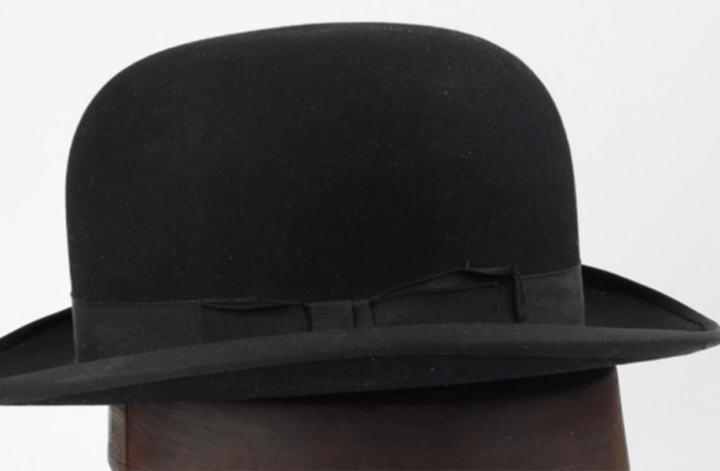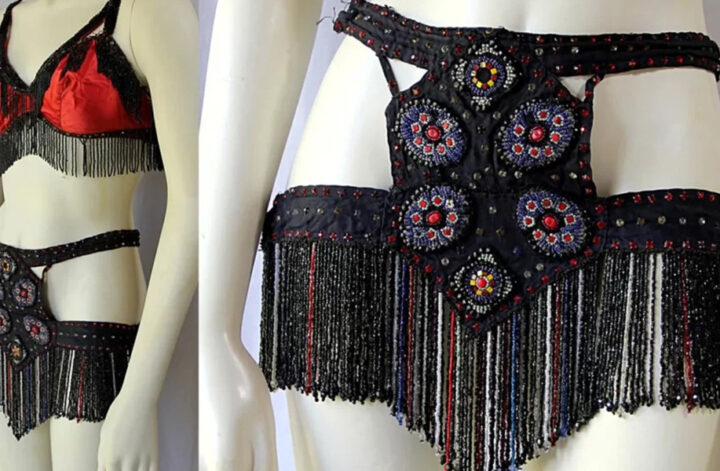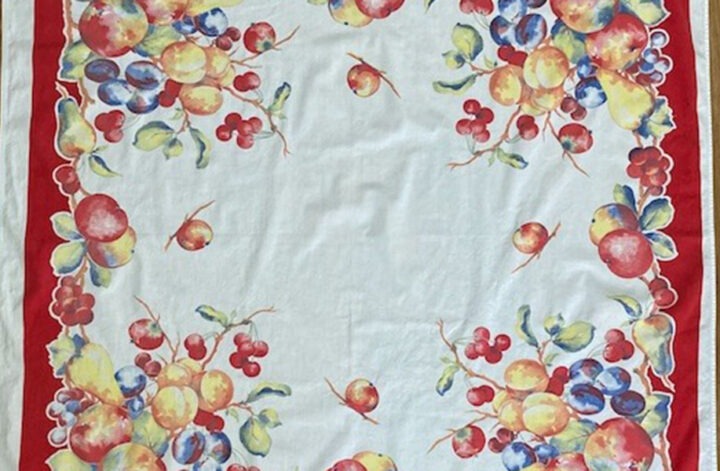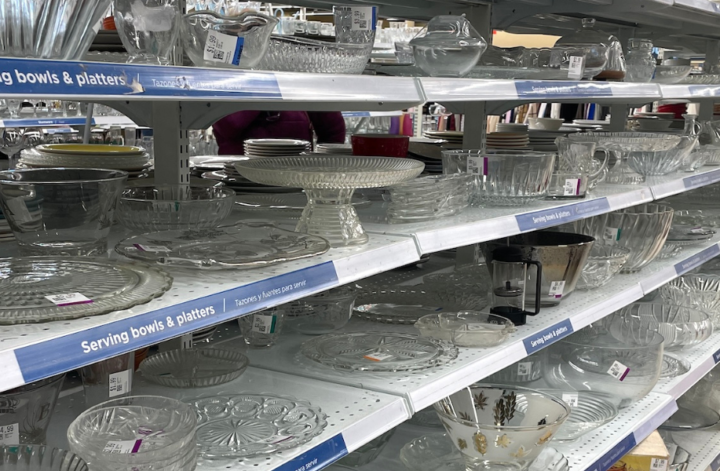When glass and china are decorated with paint, that paint can be under a glaze or fired on, making the decoration resilient. Or it can be painted on the surface without any special protection, like the Goofus glass star in this week’s fresh to market vintage. Porcelain can be “cold painted,” meaning the paint is on the surface without a protective glaze, like the Occupied Japan buildings, In both cases, there is nothing protecting the paint, which is fine when you’re displaying it, but what about when you go to clean it?
Next time you’re at the thrift store, look at the figurines. You might find an older one that has lots of missing paint. Chances are it’s a cold painted piece that’s been scrubbed too hard. Cold painted china and glass need to be cleaned gently to not damage the paint. They should not be submerged nor should they be cleaned with anything stronger than diluted dish detergent. Wipe them gently with a damp microfiber cloth and gently dab them dry or let them dry in the sun. The same applies to glass that is “flashed” with a colored stain.
Cleaning gently is always a good idea for vintage everything. Start with the least aggressive method, then scale up if whatever is griming it up is resisting your efforts. We all have days when we have something, particularly kitchen glass or aluminum, that’s so grotty you have to blast it with Fantastic or soak it in Dawn. But trust us, we know the embarrassment of having done that to something that was cold painted. Oh the horror as we watched the paint wipe off with our cloth. Start gentle and only deploy your nuclear level cleaning if you are sure the painted decorations will survive it.
We wouldn’t use Fantastic on the bracelet or the bowler hat in this week’s fresh to market vintage either, but you knew that.
Faux Coral Branch Bracelet
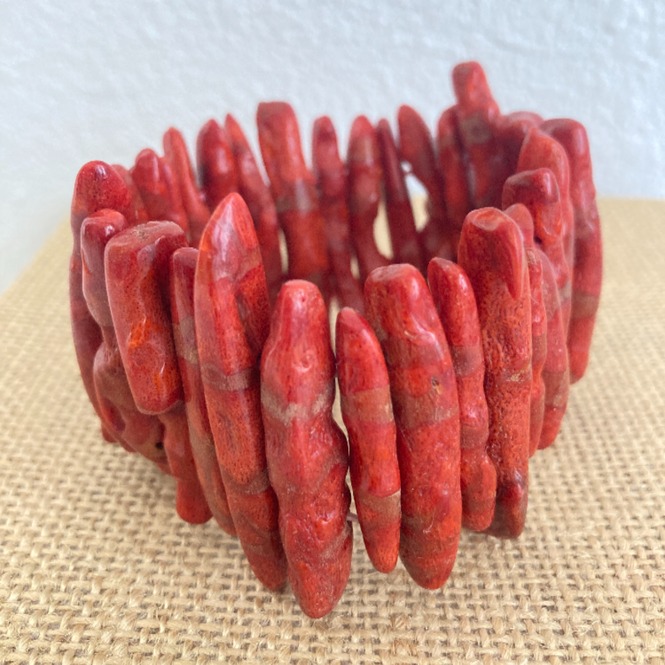
This big bold bracelet appears to be made of coral branches. In fact, it’s made of glass. The detail is impressive; by looking at it you would never know. But pick it up and rub the long beads together and you hear the clickity sound of glass clinking together. It’s beautifully made to emulate natural coral branches, and yet created with a nod to preserving nature. Right up my alley!
Faux Coral Stretch Bracelet, $44.95
-Pam, Vintage Renude
1920s Stetson Black Derby Bowler Hat
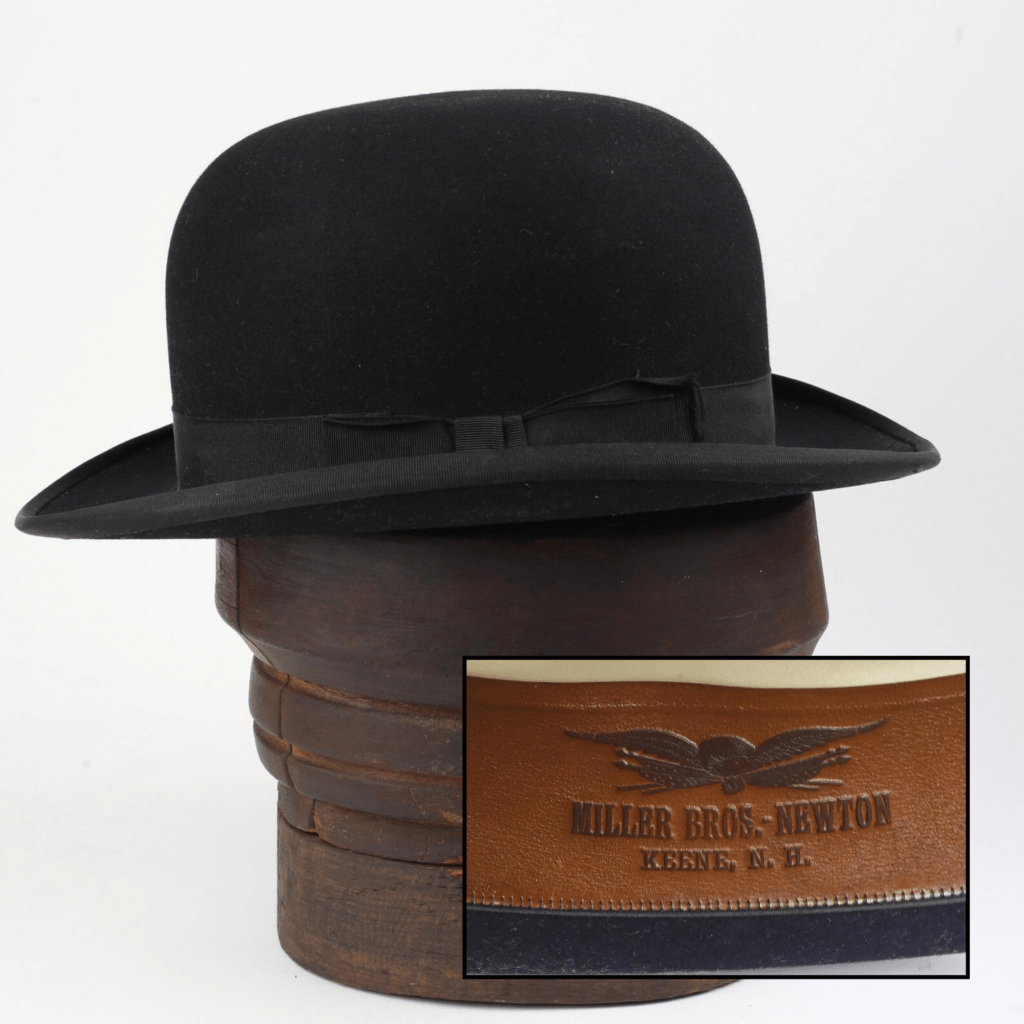
The Bowler or Derby hat was created in 1849 to meet the need for a strong, close fitting, low crowned hat for gamekeepers, who often lost their top hats to low branches while on their horse. The creators were Thomas and William Bowler of London.
The inside rim of the hat has markings both for the Stetson Hat Company, who made the hat in the 1920s, and the Miller Brothers-Newton, who opened their haberdashery in Keene, NH, and two other locations at about the same time as this hat was designed and were in business for 187 years before closing in 2022. No doubt they sold many many bowlers to younger and mature men.
UPDATE! a potential buyer contacted me and asked me to look under the sweatband inside the hat. Low and behold I found the hat size, I found papers and certificates from the company, and the owner had signed his name in ink with December, 1928 so now I even know how old the hat is.
John B. Stetson Black Derby Bowler Hat, $62.99
-Mary Ellen, Aunt Hatties Attic
Victorian Goofus Glass Paperweight
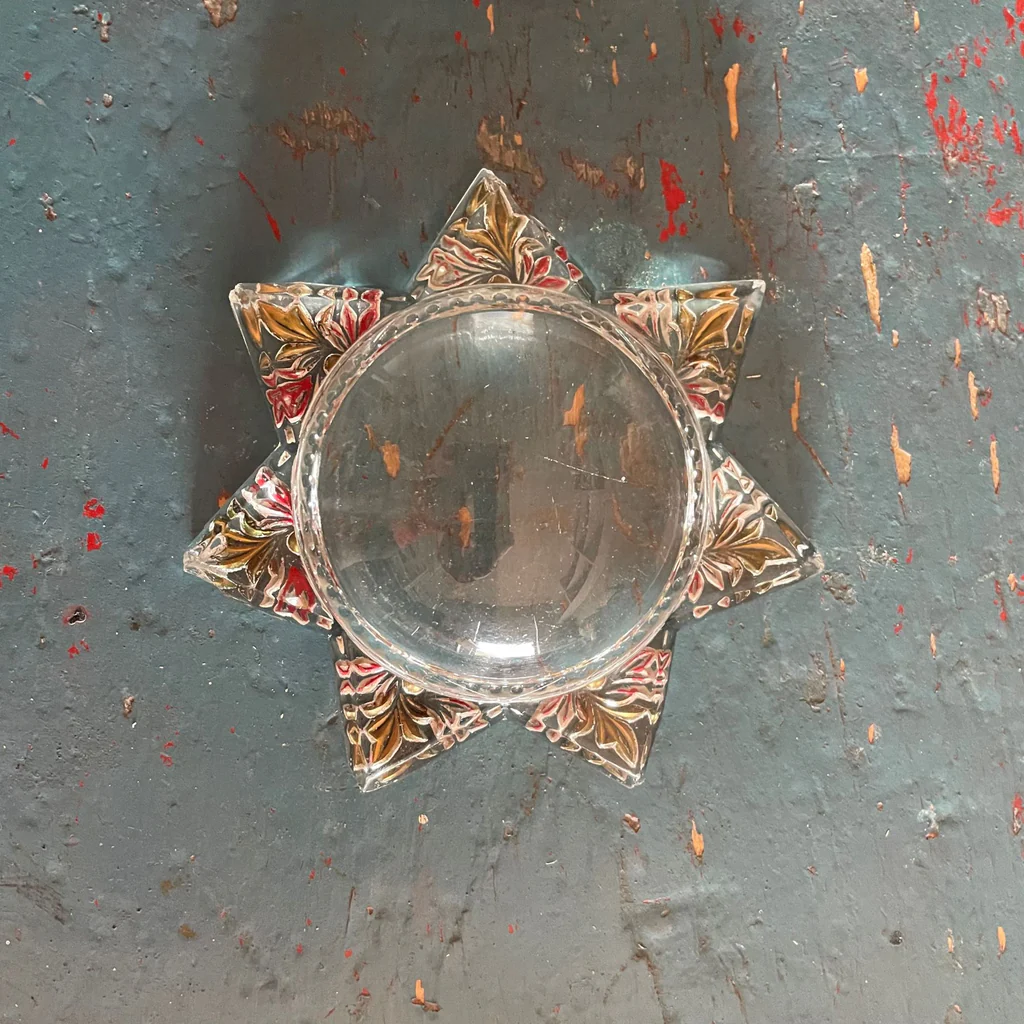
The term “Goofus glass” is an American expression for pressed glass decorated with unfired enamel paint between 1897 and 1920. It was produced by prominent glass makers and was given away as premiums with purchase or as prizes at fairs. This star shaped paperweight still bears traces of the original red and gold paint dabbed in the crevices on the points of the star.
Star Shaped Goofus Glass Paperweight, $40
-Linda, Selective Salvage
1940s Occupied Japan Buildings
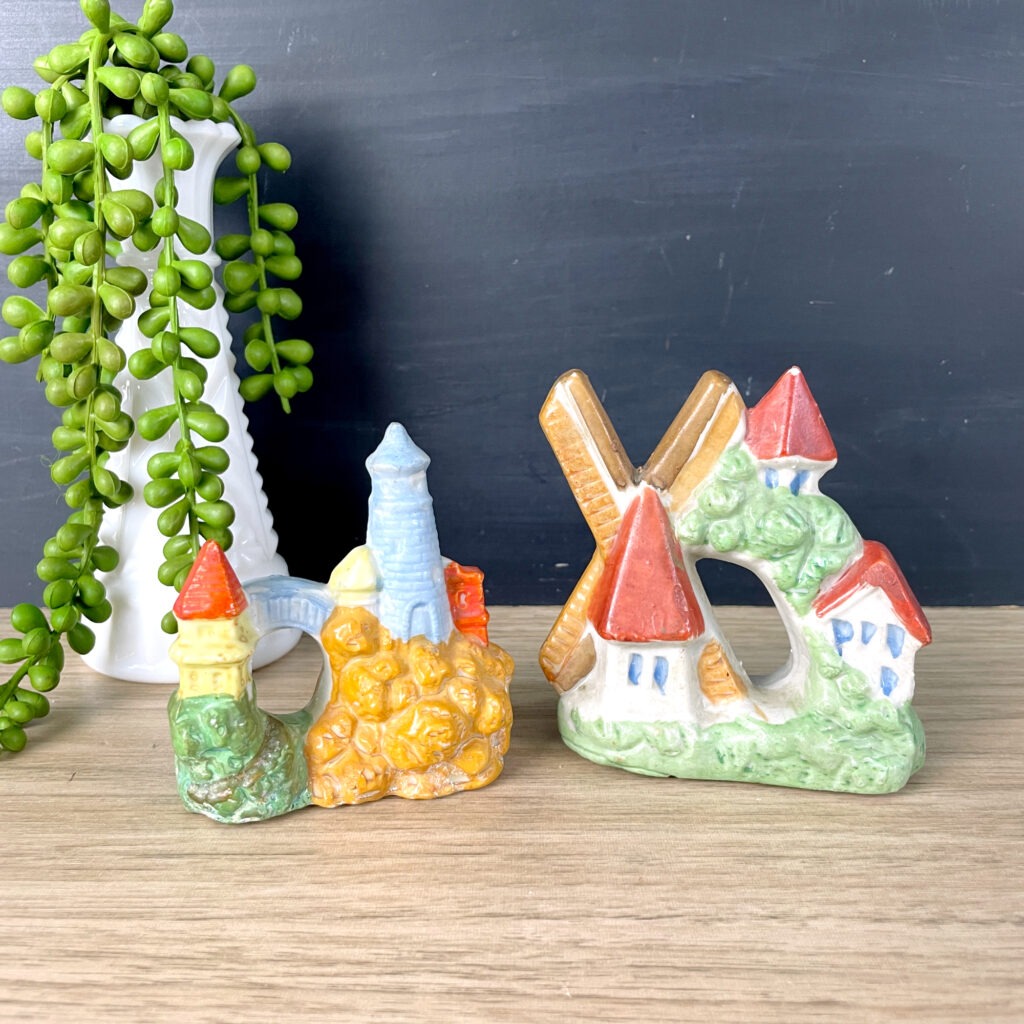
Pieces marked “Occupied Japan” were made from 1945-1952. Many are decorative novelties, like this little windmill and lighthouse. They are cold painted, so although they might look like they belong in an aquarium, the paint would probably not survive, and it’s an open question if the fish would, not knowing what chemicals are in the paint. Planting dish gardens, little gardens of houseplants in low and long planters, was popular in that era, so these were probably made to be used in those. Would they work in terrariums? That level of moisture would be fine, but no guarantees.
Made in Occupied Japan Windmill and Lighthouse, $22.
-Laurie, NextStage Vintage
We can see wearing that coral bracelet with black in the winter and white in the summer, can’t you? And holy cow would you be the talk of the town in that Stetson bowler.
We don’t serve up breaking news, but we do serve up fresh content about vintage every week. Subscribe to our email newsletter, and you’ll never miss a post. You get one email a week, so you can enjoy all our posts with your Sunday morning coffee and toast. What could be better?

